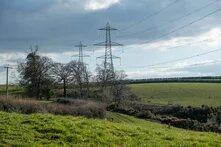The causes of the current global gas crisis are now well understood. Europe finds itself the convergence zone of two supply challenges, related to a shortfall of pipeline supplies and simultaneously an inability to attract deliveries of liquefied natural gas (LNG). Consequently, going into winter storage levels are low, and prices are extremely high. But the UK has been singled out as being more vulnerable than most, why is this so and what lessons can be learnt from the current situation?

The Dash for Gas
First, is the high level of reliance on natural gas, which today accounts for 30 percent of energy consumption and 42 per cent of power generation in the UK. The 1990s ‘dash for gas’ used supplies from the North Sea to replace coal-fired power generation and even earlier homes and industry switched to gas. Today over 85 per cent of UK households have a gas boiler. Natural gas production peaked in 2000 and by 2004 the UK had become a net importer. Since then, gas demand has fallen significantly, most recently because offshore wind has eroded gas in power generation. The latter has also changed the role gas plays in the UK’s energy system, it is less and less a source of base load power generation and more a backup for renewable intermittency. As evidenced by the falling load factor of the CCGT fleet that averaged over 65 per cent in the 2000s, but has fallen to just over 40 per cent in the last decade. At the same time, because production from the North Sea has fallen more quickly than demand, import dependency has increased and the UK imports half the gas it consumes.
Powering past coal
Second, the UK has succeeded in getting rid of coal. In 2020, coal accounted for only 1.8 percent of total power generation with less than a handful of power stations in operation and coal will be gone by the end of 2024. The demise of coal has delivered significant decarbonisation benefits and greenhouse gas (GHG) emissions from the power sector fell by 72 percent between 1990 and 2019. However, those coal fired power stations and their stocks were a source of firm power generation and energy storage that are now lost to the energy system. With coal gone, gas is the most carbon intensive element of the UK’s power generation mix. Gas has gone from being the answer in the 1990s to being the problem in the 2020s.
Reliance on the market
Third, the UK has a privatised and liberalised energy system and relies on the market to deliver secure and affordable energy services. Government and its agencies are left to regulate and incentivise. This worked when it came to building the country’s LNG infrastructure and the two gas interconnectors, all built with private capital. But it has failed in the case of gas storage. As domestic gas production fell, industry did not build significant storage as the business case was not strong enough. Then, in 2017, when Centrica announced the closure of its Rough Storage facility, the Government refused to provide support for new storage. This means that the UK with little or no gas storage to speak of, leaving it particularly exposed this winter.
Short termism and price caps
Fourth, the UK gas market is based mostly on short term purchases driven by the spot market and the ability to compete on price for LNG supplies and pipeline deliveries from Europe when needed. But the absence of significant levels of long-term contracts and storage capacity leaves the UK consumer exposed to price shocks. The situation has been made worse by measures introduced to promote competition in retail markets by encouraging new entrants, while protecting consumers from price spikes by imposing price caps. At present, retailers are buying gas on the wholesale markets at prices well above what they are allowed to charge their customers, and many are going out of business. At the same time, energy intensive industries, that are not protected by the price cap, face going of business, doing lasting damage to the country’s industrial base.
What is to be done?
In the short term there is very little that the UK Government can do about gas prices. Instead, in the run up to COP-26 hosted in Glasgow, they have released their Net-Zero strategy in which the Prime Minister Boris Johnson promises: “We will make what you pay for green, clean electricity competitive with carbon-laden gas, and with most of our electricity coming from the wind farms of the North Sea or state-of-the-art British nuclear reactors we will reduce our vulnerability to sudden price rises caused by fluctuating international fossil fuel markets.” There is no doubting that the solution is to decarbonise, the challenge is how to get from where the UK is today, with gas the single most important element of its energy mix, to where its needs to be in only 15 years’ time. Herein lies the problem, how to manage down the fossil fuel system while simultaneously building a new low carbon system. The Government promises “…to manage the transition in a way that protects jobs and investment, uses existing infrastructure, maintains security of supply, and accounts for climate risk.” To this end, it will publish a call for evidence on the future of the gas system this autumn, watch this space.
Lessons to be learnt
No doubt, there is much that the UK Government could have done differently in the past to lessen the impact of the current gas crisis, but it will pass as the global market re-establishes equilibrium, at least until the next crisis. However, there are more profound lessons to be learnt. First, the dangers of over-reliance on market mechanisms to deliver energy security, or more precisely price security. Second, the need to be vigilant to the consequences of the necessity of removing coal from the energy mix. Third, the need to address the challenge of maintaining gas security at the same time as repositioning its role in the energy system and repurposing (or decommissioning) its supporting infrastructures. These are all issues that the rest of Europe will face, though to differing degrees, in the coming years.


